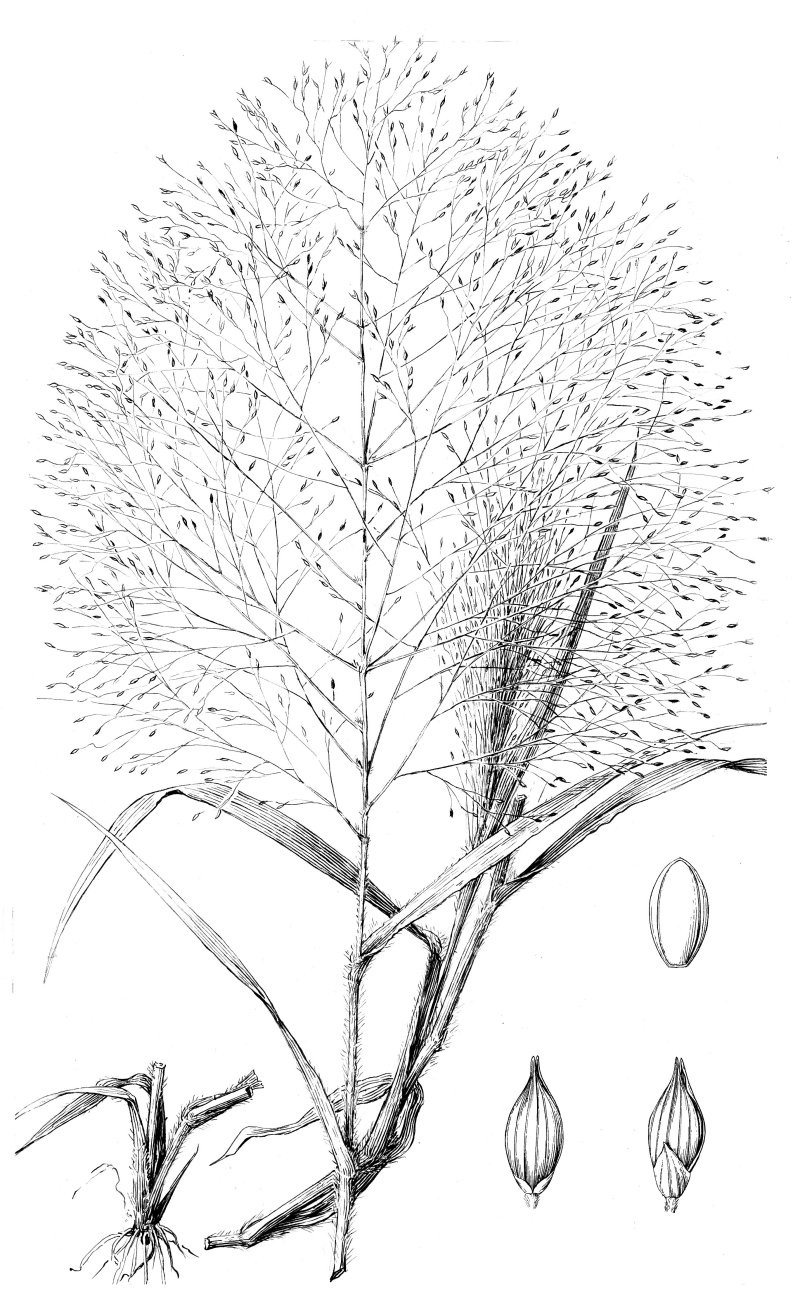
Panicum capillare L. Witchgrass Habit: Tufted, erect or decumbent annual. Culms: Erect or spreading at base, 20-80 cm. tall, simple or sparingly branched, especially at the base, papillose-hispid to nearly glabrous, densely pubescent at the nodes. Blades: 10-25 cm. long, 5-15 mm. wide, usually copiously papillose-hispid, midrib prominent. Sheaths: Usually longer than the internodes, densely papillose-hispid. Ligule: Very short, ciliate. Inflorescence: Panicles densely flowered, 20-35 cm. long, very large and diffuse, often half the length of the entire plant, nearly as broad, included at base until maturity, main axis sparsely pilose, the numerous capillary scabrous branchlets bearing towards their ends long-pediceled spikelets; the whole panicle breaking away and becoming a tumbleweed. Spikelets: 2-2.5 mm. long, about 0.9 mm. wide, elliptic, somewhat acuminate, glabrous, strongly nerved. Glumes: First glume about one half the length of the second, broad, clasping the base of the spikelet, acute; second glume and sterile lemma slightly or greatly exceeding the elliptical smooth and shining fruit, the glume often slightly longer, more or less acuminate beyond the fruit. Fruit: About 1.5 mm. long, about 0.8 mm. wide, elliptic, shiny, brownish, strongly nerved with several pale nerves, without a prominent lunate scar at the base. Habitat: Dry or sandy soil, waste places, and cultivated ground. Kansas Range: Throughout. Synonyms: Panicum barbipulvinatum Nash Panicum capillare L. var. agreste Gattinger Panicum capillare L. ssp. barbipulvinatum (Nash) Tzvelev Panicum capillare L. var. brevifolium Vasey ex Rydb. & Shear Panicum capillare L. var. barbipulvinatum (Nash) R.L. McGregor Panicum capillare L. var. occidentale Rydb. Panicum hillmani Chase Resembling Panicum capillare, especially the variety occidentale, differing from this in having no short flowering branches at the base, in the stouter culms, firmer leaves, stiffer panicle branches with the lateral spikelets on shorter, more appressed pedicels, in the well developed sterile palea, and especially in the larger darker fruit, 2 mm. long, with a prominent lunate scar at the base. Annual of prairies and plains, from Kansas to Texas.